The Institute of Oceanography in Nha Trang City (Khanh Hoa Province) is considered a Wikipedia on marine ecological system. Visitors to the Institute can observe the rich and lively images as well as learn about the life of the sea creatures and ecological samples.
The Institute has 20 specialized departments and different showrooms. The mock-up of the "Terrains of Vietnamese continental shelf" provides visitors with general information of the Vietnamese sea. It works as a guide book on the depth of the sea, the bio-diversity, profits gained from the sea, information of marine environmental protection, and others.

A humpback whale skeleton of 18m in length and 10 tonnes in weight excavated in Nam Ha Province in 1994.
|
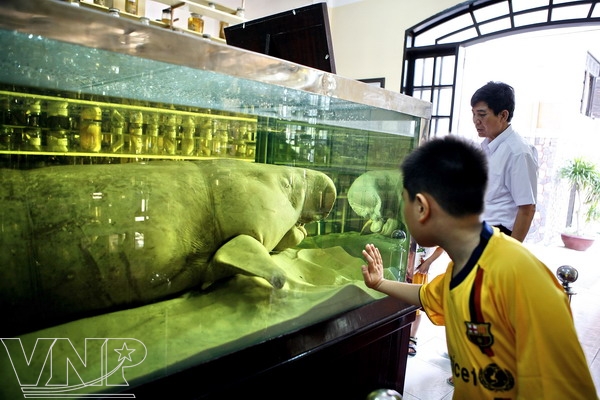 A sea calf is preserved in the tank. |
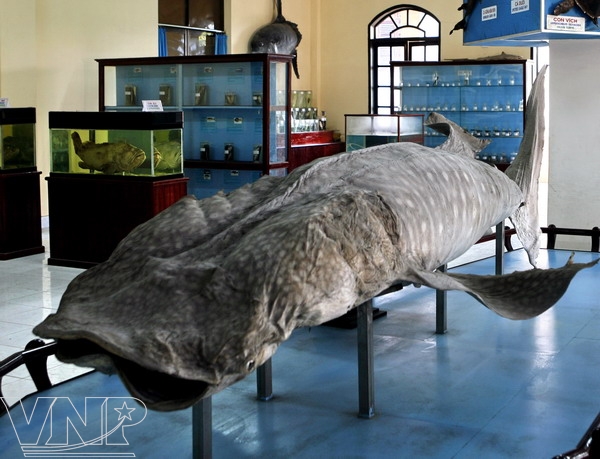 In the sample showroom. |
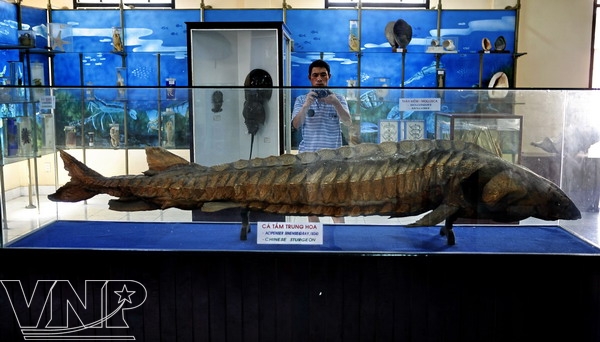 Samples of a Chinese fish species. |
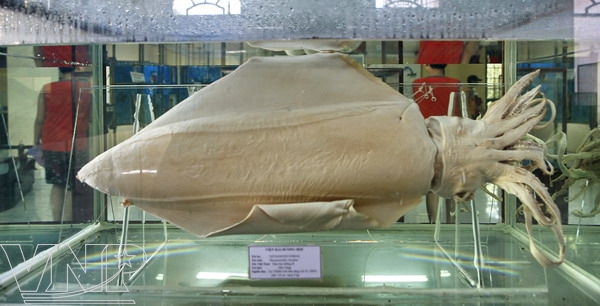 Sample of a big cuttlefish. |
 Everyday, more than 1,000 visitors visit Nha Trang Institute of Oceanography. |
 In the showroom with samples of fish, oysters, etc. |
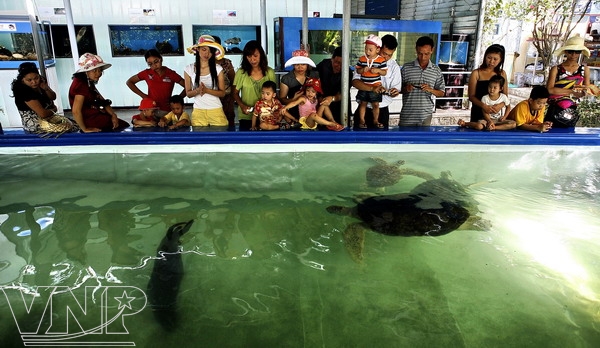 The tank to rear tortoises. |
The Museum of Oceanography located in the Institute of Oceanography has many showrooms of the sea creatures and the eco-system. Visiting the aquarium, visitors seem to be lost in a colourful world of rare and valuable sea creatures, such as sea anemones, red and blue starfish, holothurians, snakes, tortoises, shrimp, fish, etc.
In the out-door sea creature rearing tank, visitors will have a general view of the diversity in colours and species of fish. Many rare and valuable species of fish are being reared, including amberjack, macropodus and king fish. Of special interest is the stripped dragon fish which has red, brown and yellow colours, with its front fins stretching like that of the bird, its back fin with 13 poisonous thorns, its thin fan-like tail with spots, its dragon-like head, and its body moving as gentle as a dancing fairy. The limuloids, often living in pairs, are said to have been in existence for about 400 million years. Big fish, like the shark, skate and neck-stripped fish are reared in a separate tank.
In another showroom, on display are 20,000 samples of sea creatures from Southeast Asia which were collected from the East Sea and surrounding areas during survey trips. They have been preserved carefully for the purpose of protecting the bio-diversity of the sea creatures.
The samples are divided into two categories: big and small. Among the big samples are a Humpback Whale skeleton of 18m in length and 18 tonnes in weight, which was found in Nam Ha Province in 1994; a skeleton of Dugong found in November 1997 in Lo Voi Beach (Con Dao Island), a species in risk of extinction. The small samples include a carrier-swift in its nest made from its own saliva and built on the side of high cliffs; a green spotted octopus first found in Vietnam in 1999; the sea calf, the Chinese sturgeon and the king crab found in the surrounding areas of the Vietnamese sea.
At the Institute of Oceanography visitors may have a feeling that they are taking in a tour underneath the ocean where they observe thousands of sea creatures. They also have a chance to see a survey ship of 30DWT with a speed of 8 miles/hour, which is used by the Institute's researchers on their trips to explore the ocean.
The Institute's library has more than 7,000 books and 60,000 scientific journals sent by 140 international organizations from 30 countries, with many of them being marine scientific documents compiled in the 18th-19th centuries - all are very helpful for scientists and research work. The Institute of Oceanography has contributed many huge research projects to the cause of exploring and protecting the East Sea. They include 1,100 printed publications, of which those on the bio-diversity account for 62.6%, 11.6% on oceanographic physics, 7.6% on eco-environment, 5.4% on marine geology and geomorphology, and 4.4% on oceanographic chemistry and bio-chemistry.
Departing the Institute of Oceanography, visitors will surely have useful knowledge of the marine potential and preservation work of the Vietnamese oceanography as well as people's awareness of protecting the ocean.
Nha Trang Institute of Oceanography
Address: No.1, Cau Da – Nha Trang City – Khanh Hoa Province
Open time: 6am – 6 pm, weekly, including holidays.
Entrance fee: 15,000 VND (adult), 7,000 VND (children)
Interpretation: 30,000 VND/tour.
No comments:
Post a Comment